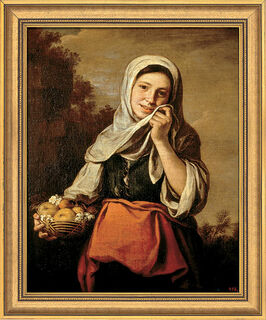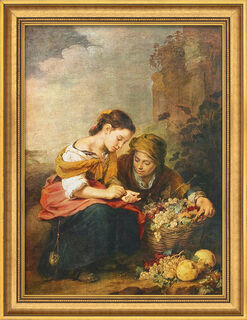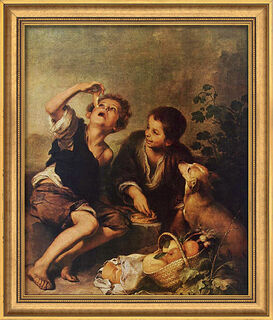Bartolomé E. Murillo
Bartolomé Esteban Perez was baptised in Seville on 1 January 1618. After his father's death, the ten-year-old was apprenticed to Juan del Castillo. However, his earliest works, with their austere naturalism, bear witness to the influence of the art of Juan de las Roelas and Francisco de Herrera the Elder. His painting received important impulses from the art of Francisco de Zurbarán and Jusepe Riberas.
His first independent work from 1645-46 was the eleven legend paintings for the cloister of the former monastery of St. Francisco in Seville. His special way of creating an enchanting atmosphere through gentle lighting won him new commissions. He painted three paintings for the cathedral of Seville.
In addition to religious motifs, Murillo also created genre paintings, which were in great demand. The subtle use of light and shadow as well as warm colours made these paintings sought-after works of art.
Around 1650, Murillo received important inspiration from the works of Raphael, Peter Paul Rubens and Anthonis van Dyck. Soft contours, delicate-toned colours and the golden veil of light give his distinctive style the title "estilo vaporoso".
In 1660, the painter's success was highlighted by his appointment as president of the Seville Academy of Art, which he co-founded.
Bartolomé Esteban Murillo died in his hometown on 3 April 1682 at the age of 64. He was the main representative of the High Baroque and one of the most famous Spanish painters. Many of his works can be seen today in major European museums.



